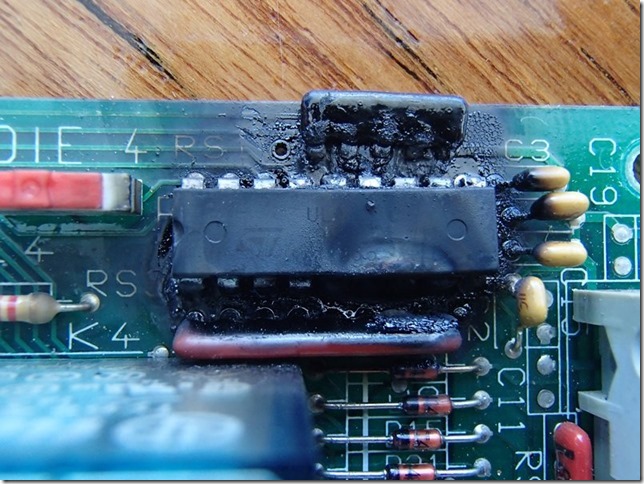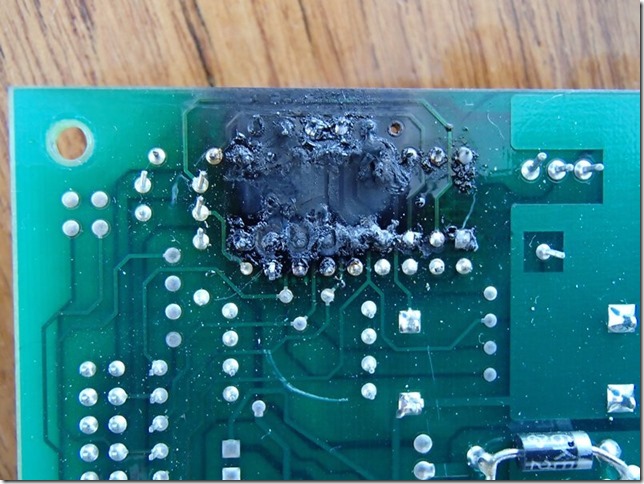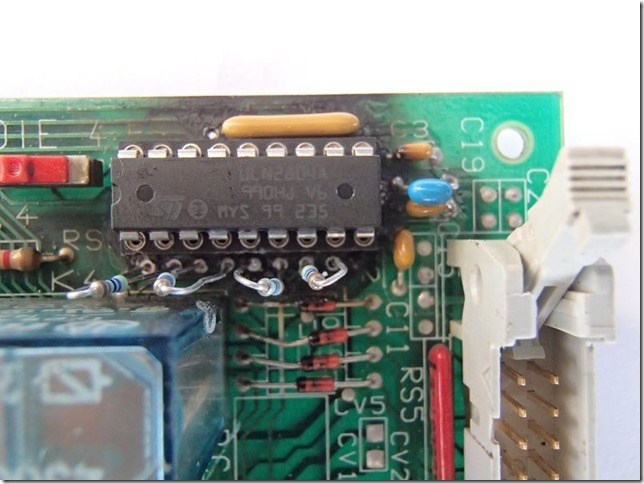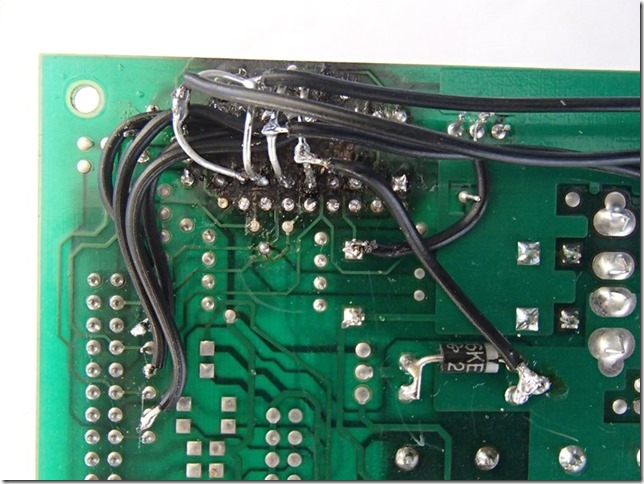Repairing the lightning damage

Anastasia
Phil May and Andrea Twigg
Tue 4 Nov 2014 04:22
|
The main damage from the lightning, apart from various fuses being blown,
was that three of our power distribution boards were fried. The boards are
no longer in production (I believe the company that made them has shut down) and
so Catana could not easily supply replacements. I decided to try and
repair the boards.
They are fairly simple relay control circuits built from standard
electronic components. I picked up all the components I thought I would
need on my last trip to the UK. The main challenge was that the failing
chip got so hot that it burned a hole right through the circuit boards.
These are three layered boards, with a set of copper tracks on each side of the
board and another set sandwiched in the middle. The tracks in the burned
out area were a real mess.
I started by replacing the chip on the least damaged board and that one
worked first time. On the second board I failed to clean away all the
debris, leaving a voltage leak between two of the pins of the chip, which was
incorrectly triggering a relay. That problem took the most part of a day
to resolve. I took more care with the final board and this one also worked
first time.
The final task was to replace some burned out LEDs on the central
console. This was unexpected and I did not have replacement LEDs, but
surprisingly found a Radio Shack on Curacao where I could buy them.
We now have central control of our boat systems again!
We were not struck directly I have been wondering why a nearby strike would
cause such damage. I think it is because we are a catamaran and are
therefore more susceptible to voltages through the water, for the same reason
that you are more likely to survive a nearby lightning strike if you are
standing on one leg. (Do boy scouts really practise standing on one leg in
a storm?)
With two hulls in the water, the voltage from a strike nearby will find a
nice low-resistance path up through the ground in one hull and out of the ground
in the other hull. Meanwhile the boat systems are subjected to
hundreds/thousands of volts of reverse polarity. Why aren’t catamaran
electrical systems designed with all the grounding routed through just one of
the hulls?
 The failing chip got very hot...
 ...and burned right through the circuit board, fusing the pins and
tracks
 The fix involved replacing the burned out chip plus some failed resistors
and capacitors
 The majority of the tracks to the chip had to be rewired
|